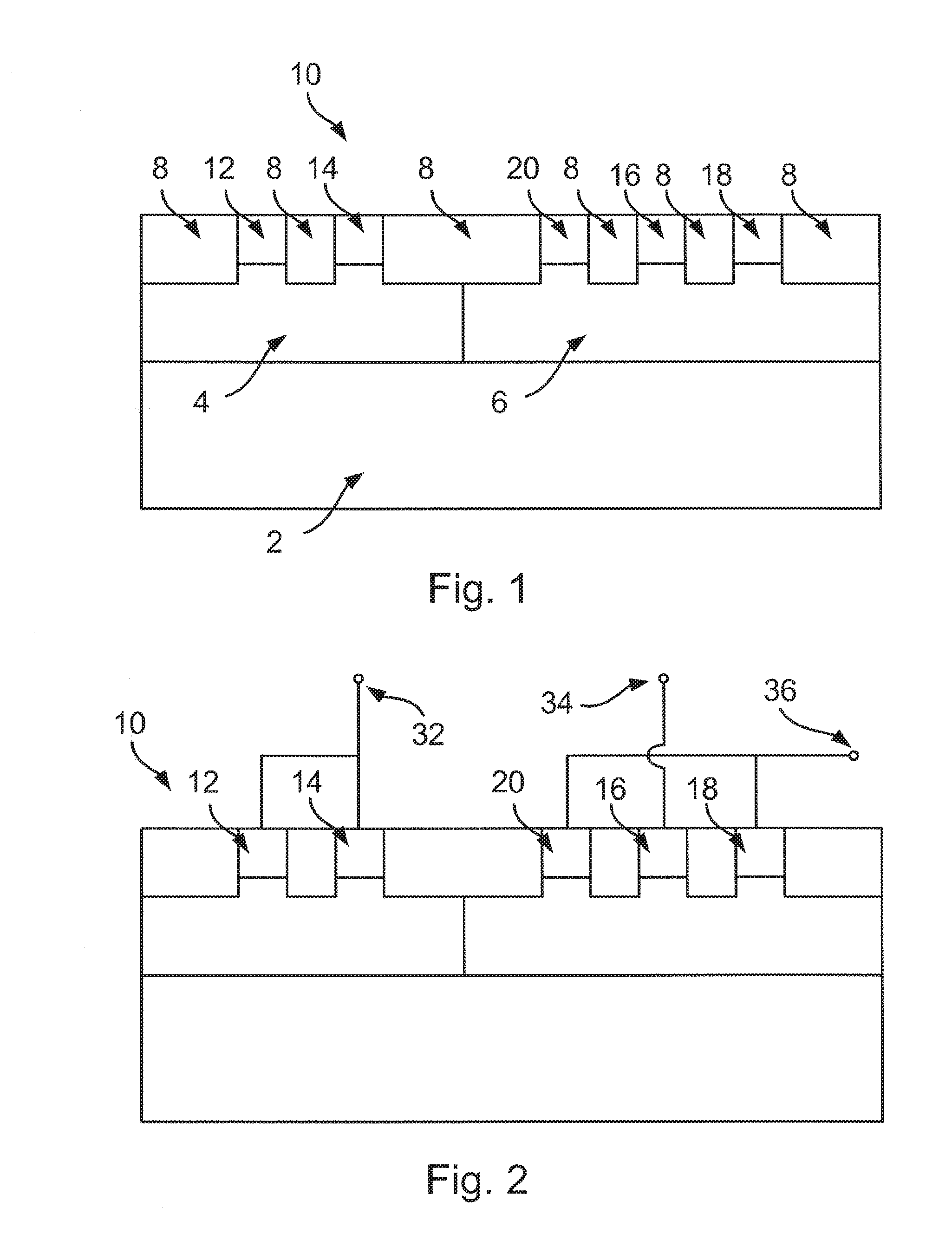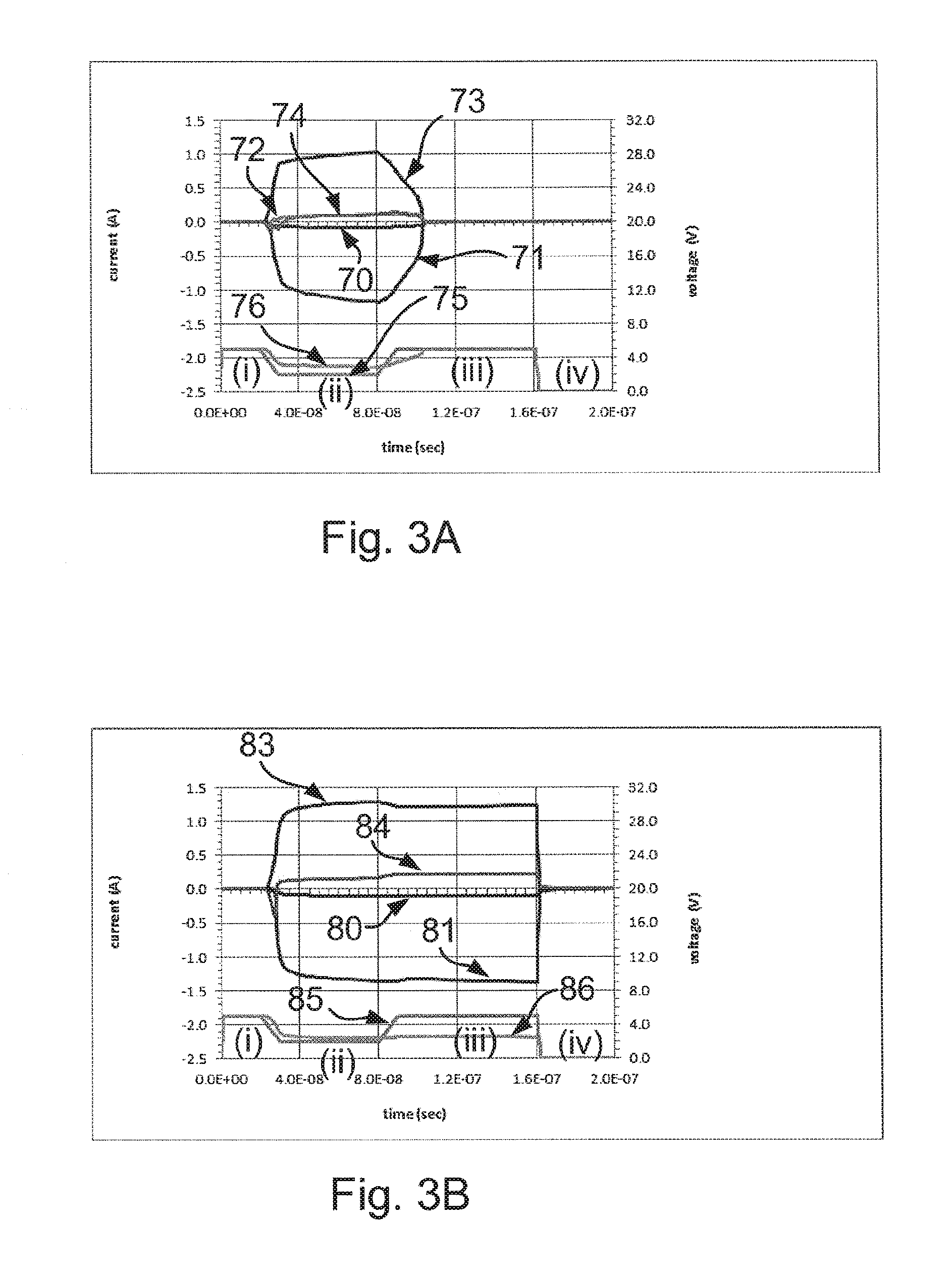Silicon Controlled Rectifier
a rectifier and silicon technology, applied in the direction of semiconductor devices, electrical apparatus, transistors, etc., can solve the problems of device latching, scr shut down, and voltage across the scr needs to be reduced below the “hold voltage”
- Summary
- Abstract
- Description
- Claims
- Application Information
AI Technical Summary
Benefits of technology
Problems solved by technology
Method used
Image
Examples
Embodiment Construction
[0041]Embodiments of the present disclosure are described in the following with reference to the accompanying drawings.
[0042]FIG. 1 shows a silicon controlled rectifier 10 in accordance with an embodiment of the present disclosure. The silicon controlled rectifier 10 may be provided in a semiconductor substrate 8. The substrate may, for instance, be a silicon substrate 8. The substrate may be doped to have a first conductivity type, which may be either p-type or n-type.
[0043]The silicon controlled rectifier 10 includes a first region 4 and a second region 6 located in the substrate 8. The second region 6 is located adjacent the first region 4. Each region 4, 6 may comprise a doped semiconductor material such as doped silicon. The first region 4 is doped to have a first conductivity type and the second region 6 is doped to have a second conductivity type (where the first and second conductivity types are different conductivity types). In the following examples, the first conductivity...
PUM
 Login to View More
Login to View More Abstract
Description
Claims
Application Information
 Login to View More
Login to View More - R&D
- Intellectual Property
- Life Sciences
- Materials
- Tech Scout
- Unparalleled Data Quality
- Higher Quality Content
- 60% Fewer Hallucinations
Browse by: Latest US Patents, China's latest patents, Technical Efficacy Thesaurus, Application Domain, Technology Topic, Popular Technical Reports.
© 2025 PatSnap. All rights reserved.Legal|Privacy policy|Modern Slavery Act Transparency Statement|Sitemap|About US| Contact US: help@patsnap.com



